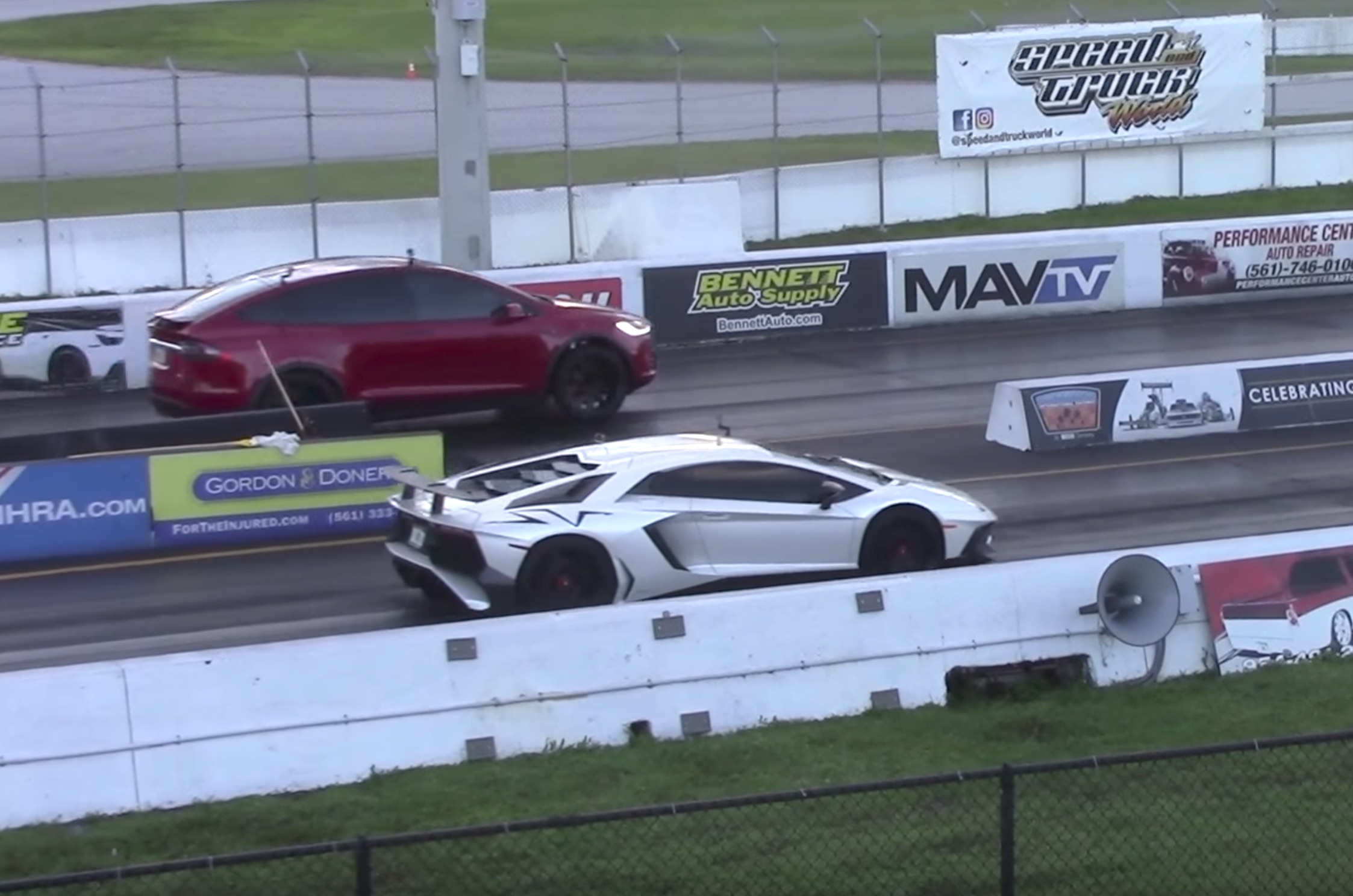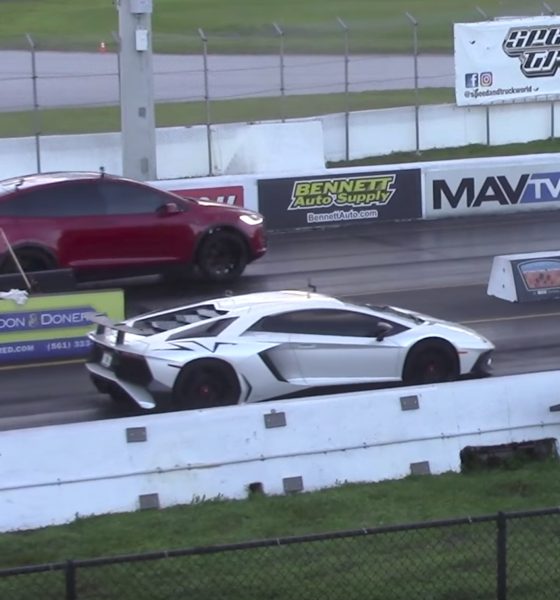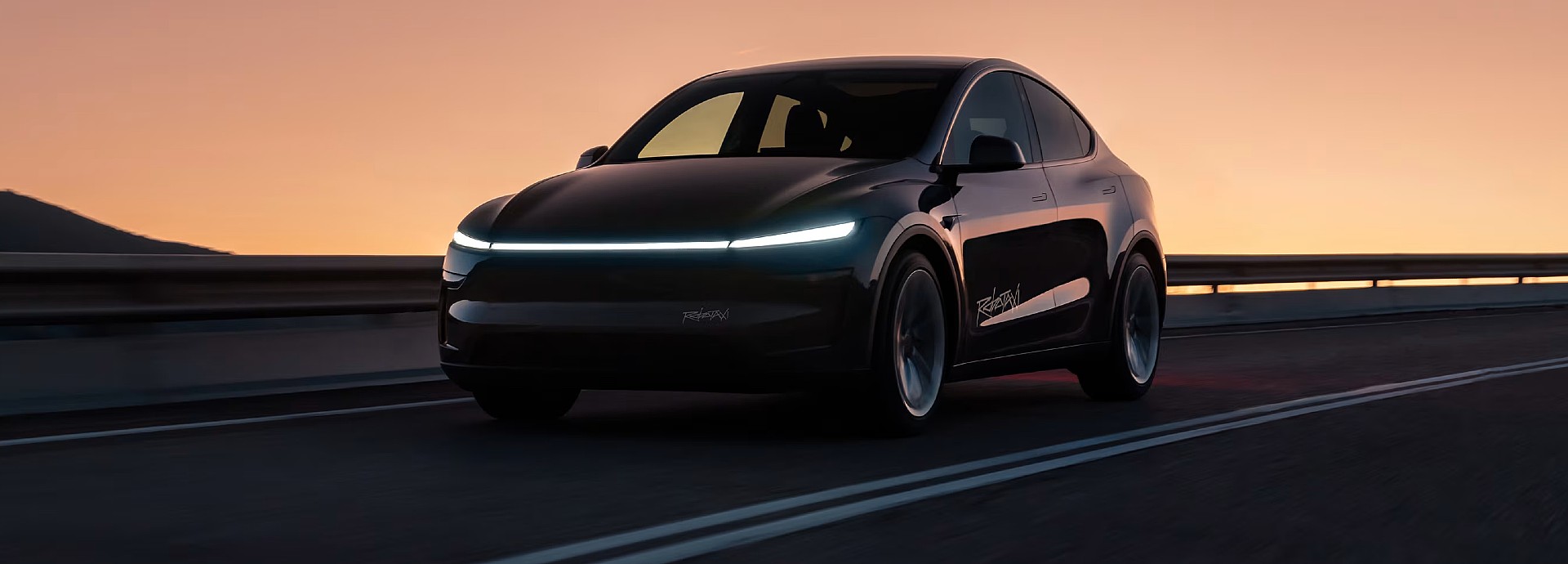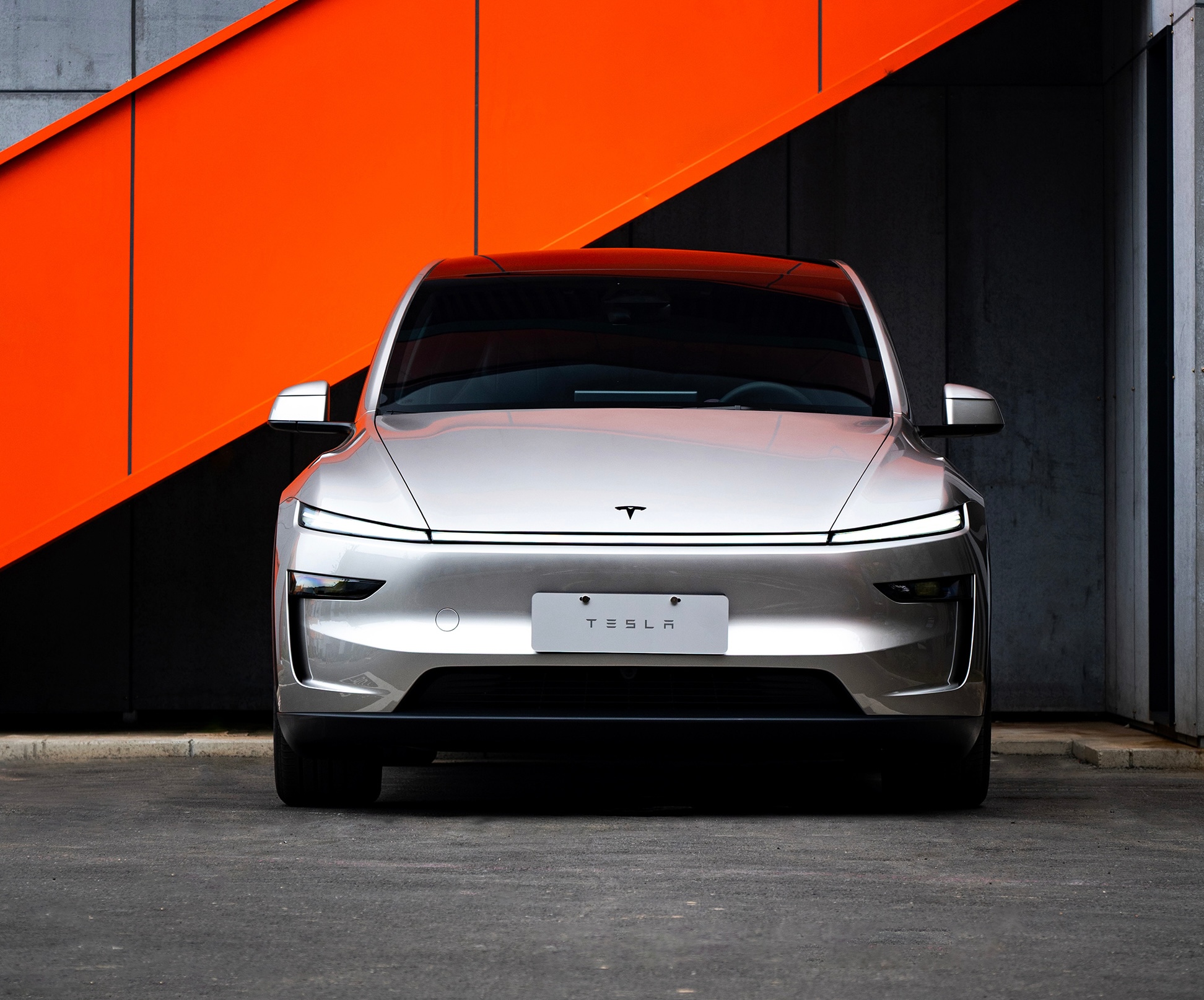

News
Tesla has proven itself, but Ferrari & Lamborghini says EVs can’t be supercars
In a rather rare act of solidarity, rivals Ferrari and Lamborghini have agreed on one thing: neither one would be making an all-electric supercar in the near future. Both companies note that electric car technology is not there yet to warrant an initiative to create a born-and-bred supercar.
Citing a rather dated example for the limitations of electric cars, the supercar makers noted that true high-performance vehicles need to be capable of launching multiple times in full power, over and over again, in both straights and corners. This is a limitation that was true for vehicles like the Tesla Model S, which is a monster in straight line races but compromised in closed circuits. These issues have largely been solved in more recent vehicles like the Model 3 Performance, an all-electric car that is capable of besting other high-performance sedans on a track.
The supercar makers also noted that the lack of sound from a roaring V12 or a supercharged V8 is a great part of the supercar experience, and this is something that is mostly absent in electric vehicles. Commenting on faux engine noises pumped into the cabin similar to the ones employed in the BMW i8, Ferrari’s chief technology officer, Michael Hugo, noted at the Geneva Motor Show that “we have to have a certain credibility.”
Maurizio Reggiani, chief technical officer at Lamborghini also noted that the big battery packs required of electric cars could compromise some of the brand’s design elements. Lamborghinis are already very low on the ground, and the CTO noted that stuffing a battery pack on the floor would sacrifice the benefit of a low center of gravity that the company’s wedge-shaped supercars enjoy.
Quite interestingly, Porsche CEO Oliver Blume noted in the 2019 Annual Press Conference that emotion in cars is not just about the noise that an engine makes. It is also about design, quality, driving characteristics, and the holistic experience of driving the vehicle. Porsche is hardly a neophyte in terms of creating supercars either, with vehicles like the 919 Hybrid and the 918 Spyder under its belt, so Blume’s statement could be taken with a notable amount of legitimacy.
RELATED: Exclusive: Porsche’s electric heart beats in the Taycan’s Zuffenhausen factory
It is a bit disappointing to see Ferrari and Lamborghini dismiss electric propulsion at this stage in the game. Just last week, Germany’s big three, Volkswagen, BMW, and Daimler, all decided that electric cars are the way forward, signifying an upcoming industry shift. What is somewhat surprising from Ferrari and Lamborghini’s recent comments was the fact that the companies seemed to have completely ignored the existence of all-electric supercars that are present today.
There’s the Rimac C_Two from Croatia, which matches and even exceeds any Lamborgini and Ferrari in terms of its explosive power. There’s the Nio EP9 that conquered the Nurburgring’s records. There’s even the Pininfarina Battista, an all-electric 1,900 bhp monster that can hit 186 mph in less than 12 seconds. All of these vehicles are fully electric.
Of course, there is also the next-generation Tesla Roadster, which goes from 0-60 mph in 1.9 seconds at its base form. Elon Musk dubbed the vehicle as a “hardcore smackdown” to gasoline cars, and in terms of specs, it’s downright frightening, from its 250+ mph top speed, and its higher trims, one of which is called the “SpaceX package,” which uses literal rocket technology from Musk’s private rocket company. The Rimac C_Two is expected to start deliveries in 2020, the same year as the next-gen Roadster. The NIO EP9 has been around since 2016, and the Pininfarina Battista is expected to arrive in 2020.
So much for electric car technology not being there yet.

Investor's Corner
Tesla gets bold Robotaxi prediction from Wall Street firm
Last week, Andrew Percoco took over Tesla analysis for Morgan Stanley from Adam Jonas, who covered the stock for years. Percoco seems to be less optimistic and bullish on Tesla shares, while still being fair and balanced in his analysis.

Tesla (NASDAQ: TSLA) received a bold Robotaxi prediction from Morgan Stanley, which anticipates a dramatic increase in the size of the company’s autonomous ride-hailing suite in the coming years.
Last week, Andrew Percoco took over Tesla analysis for Morgan Stanley from Adam Jonas, who covered the stock for years. Percoco seems to be less optimistic and bullish on Tesla shares, while still being fair and balanced in his analysis.
Percoco dug into the Robotaxi fleet and its expansion in the coming years in his latest note, released on Tuesday. The firm expects Tesla to increase the Robotaxi fleet size to 1,000 vehicles in 2026. However, that’s small-scale compared to what they expect from Tesla in a decade.
Tesla expands Robotaxi app access once again, this time on a global scale
By 2035, Morgan Stanley believes there will be one million Robotaxis on the road across multiple cities, a major jump and a considerable fleet size. We assume this means the fleet of vehicles Tesla will operate internally, and not including passenger-owned vehicles that could be added through software updates.
He also listed three specific catalysts that investors should pay attention to, as these will represent the company being on track to achieve its Robotaxi dreams:
- Opening Robotaxi to the public without a Safety Monitor. Timing is unclear, but it appears that Tesla is getting closer by the day.
- Improvement in safety metrics without the Safety Monitor. Tesla’s ability to improve its safety metrics as it scales miles driven without the Safety Monitor is imperative as it looks to scale in new states and cities in 2026.
- Cybercab start of production, targeted for April 2026. Tesla’s Cybercab is a purpose-built vehicle (no steering wheel or pedals, only two seats) that is expected to be produced through its state-of-the-art unboxed manufacturing process, offering further cost reductions and thus accelerating adoption over time.
Robotaxi stands to be one of Tesla’s most significant revenue contributors, especially as the company plans to continue expanding its ride-hailing service across the world in the coming years.
Its current deployment strategy is controlled and conservative to avoid any drastic and potentially program-ruining incidents.
So far, the program, which is active in Austin and the California Bay Area, has been widely successful.
News
Tesla Model Y L is gaining momentum in China’s premium segment
This suggests that the addition of the Model Y L to Tesla China’s lineup will not result in a case of cannibalization, but a possible case of “premiumization” instead.

Tesla’s domestic sales in China held steady in November with around 73,000 units delivered, but a closer look at the Model Y L’s numbers hints at an emerging shift towards pricier variants that could very well be boosting average selling prices and margins.
This suggests that the addition of the Model Y L to Tesla China’s lineup will not result in a case of cannibalization, but a possible case of “premiumization” instead.
Tesla China’s November domestic numbers
Data from the a Passenger Car Association (CPCA) indicated that Tesla China saw domestic deliveries of about 73,000 vehicles in November 2025. This number included 34,000 standard Model Y units, 26,000 Model 3 units, and 13,000 Model Y L units, as per industry watchers.
This means that the Model Y L accounted for roughly 27% of Tesla China’s total Model Y sales, despite the variant carrying a ~28% premium over the base RWD Model Y that is estimated to have dominated last year’s mix.
As per industry watcher @TSLAFanMtl, this suggests that Tesla China’s sales have moved towards more premium variants this year. Thus, direct year-over-year sales comparisons might miss the bigger picture. This is true even for the regular Model Y, as another premium trim, the Long Range RWD variant, was also added to the lineup this 2025.
November 2025 momentum
While Tesla China’s overall sales this year have seen challenges, the Model Y and Model 3 have remained strong sellers in the country. This is especially impressive as the Model Y and Model 3 are premium-priced vehicles, and they compete in the world’s most competitive electric vehicle market. Tesla China is also yet to roll out the latest capabilities of FSD in China, which means that its vehicles in the country could not tap into their latest capabilities yet.
Aggregated results from November suggest that the Tesla Model Y took the crown as China’s #1 best-selling SUV during the month, with roughly 34,000 deliveries. With the Model Y L, this number is even higher. The Tesla Model 3 also had a stellar month, seeing 25,700 deliveries during November 2025.
Cybertruck
Tesla Cybertruck earns IIHS Top Safety Pick+ award
To commemorate the accolade, the official Cybertruck account celebrated the milestone on X.

The Tesla Cybertruck has achieved the Insurance Institute for Highway Safety’s (IIHS) highest honor, earning a Top Safety Pick+ rating for 2025 models built after April 2025.
The full-size electric pickup truck’s safety rating is partly due to the vehicle’s strong performance in updated crash tests, superior front crash prevention, and effective headlights, among other factors. To commemorate the accolade, the official Cybertruck account celebrated the milestone on X.
Cybertruck’s IIHS rating
As per the IIHS, beginning with 2025 Cybertruck models built after April 2025, changes were made to the front underbody structure and footwell to improve occupant safety in driver-side and passenger-side small overlap front crashes. The moderate overlap front test earned a good rating, and the updated side impact test also received stellar marks.
The Cybertruck’s front crash prevention earned a good rating in pedestrian scenarios, with the standard Collision Avoidance Assist avoiding collisions in day and night tests across child, adult crossing, and parallel paths. Headlights with high-beam assist compensated for limitations, contributing to the top award.
Safest and most autonomous pickup
The Cybertruck is one of only two full-size pickups to receive the IIHS’ Top Safety Pick + rating. It is also the only one equipped with advanced self-driving features via Tesla’s Full Self-Driving (Supervised) system. Thanks to FSD, the Cybertruck can navigate inner city streets and highways on its own with minimal supervision, adding a layer of safety beyond passive crash protection.
Community reactions poured in, with users praising the vehicle’s safety rating amidst skepticism from critics. Tesla itself highlighted this by starting its X post with a short clip of a Cybertruck critic who predicted that the vehicle will likely not pass safety tests. The only question now is, of course, if the vehicle’s Top Safety Pick+ rating from the IIHS will help the Cybertruck improve its sales.








